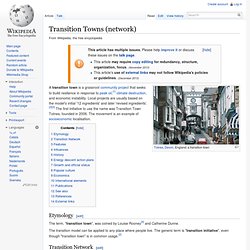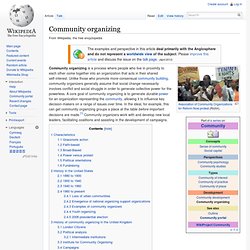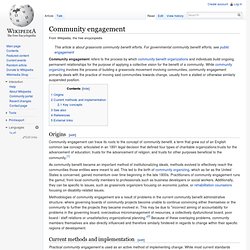

Participatory budgeting. Participatory budgeting (PB) is a process of democratic deliberation and decision-making, and a type of participatory democracy, in which ordinary people decide how to allocate part of a municipal or public budget.

Participatory budgeting allows citizens to identify, discuss, and prioritize public spending projects, and gives them the power to make real decisions about how money is spent. When PB is taken seriously and is based on mutual trust local governments and citizen can benefit equally. In some cases PB even raised people's willingness to pay taxes.[1] Participatory budgeting generally involves several basic steps: 1) Community members identify spending priorities and select budget delegates 2) Budget delegates develop specific spending proposals, with help from experts 3) Community members vote on which proposals to fund 4) The city or institution implements the top proposals Porto Alegre[edit] Participatory budgeting has been practiced in Porto Alegre since 1989. Participation (decision making) Michel Fanoli - Politics in an Oyster House Dedicated To HB Latrobe Esq - Walters 93145 Participation in social science refers to different mechanisms for the public to express opinions - and ideally exert influence - regarding political, economic, management or other social decisions.

Participatory decision making can take place along any realm of human social activity, including economic (i.e. participatory economics), political (i.e. participatory democracy or parpolity), management (i.e. participatory management), cultural (i.e. polyculturalism) or familial (i.e. feminism). Sherry Arnstein discusses eight types of participation in A Ladder of Citizen Participation (1969).
Often termed as "Arnstein's ladder", these are broadly categorized as: Citizen Power: Citizen Control, Delegated Power, Partnership.Tokenism: Placation, Consultation, Informing.Non-participation: Therapy, Manipulation. Civil society. The term civil society has a range of meanings in contemporary usage.

Transition Towns. A transition town is a grassroot community project that seeks to build resilience in response to peak oil,[1] climate destruction, and economic instability.

Local projects are usually based on the model's initial '12 ingredients' and later 'revised ingredients'.[2][3] The first initiative to use the name was Transition Town Totnes, founded in 2006. The movement is an example of socioeconomic localisation. The term, "transition town", was coined by Louise Rooney[4] and Catherine Dunne. The transition model can be applied to any place where people live. The generic term is "transition initiative", even though "transition town" is in common usage.[2] Between late 2006 and early 2007 the Transition Network was founded as a UK charity.
The Transition Network website contains a listing of the initiatives that have registered there.[6] While the focus and aims remain the same, the methods used to achieve these vary. In the United States, transition initiatives have sprung up in many communities. Community organizing. Characteristics[edit] Organized community groups attempt to influence government, corporations and institutions, seek to increase direct representation within decision-making bodies, and foster social reform more generally.

Where negotiations fail, these organizations quickly seek to inform others outside of the organization of the issues being addressed and expose or pressure the decision-makers through a variety of means, including picketing, boycotting, sit-ins, petitioning, and electoral politics. Organizing groups often seek out issues they know will generate controversy and conflict, this allows them to draw in and educate participants, build commitment, and establish a reputation for winning.[2] Thus, community organizing is predominately focused on more than just resolving specific issues. In fact, specific issues are often vehicles for other organizational agendas as much as they are ends in themselves. Grassroots action[edit] Community engagement. This article is about grassroots community benefit efforts.

For governmental community benefit efforts, see public engagement Community engagement refers to the process by which community benefit organizations and individuals build ongoing, permanent relationships for the purpose of applying a collective vision for the benefit of a community. While community organizing involves the process of building a grassroots movement involving communities, community engagement primarily deals with the practice of moving said communities towards change, usually from a stalled or otherwise similarly suspended position.
Origins[edit] Community engagement can trace its roots to the concept of community benefit, a term that grew out of an English common law concept, articulated in an 1891 legal decision that defined four types of charitable organizations:trusts for the advancement of education; trusts for the advancement of religion; and trusts for other purposes beneficial to the community.[1] Stakeholder engagement. Stakeholder engagement is the process by which an organisation involves people who may be affected by the decisions it makes or can influence the implementation of its decisions. They may support or oppose the decisions, be influential in the organization or within the community in which it operates, hold relevant official positions or be affected in the long term. Involving stakeholders in decision-making processes is not confined corporate social responsibility (CSR) processes.
It's a tool used by private and public sector organisations, especially when they want to develop understanding and agree to solutions on complex issues or issues of concern. An underlying principle of stakeholder engagement is that stakeholders have the chance to influence the decision-making process. Pluralism. Pluralism is used in different ways across a wide range of topics. Stakeholder theory. Examples of a company's internal and external stakeholders. In the traditional view of the firm, the shareholder view, the shareholders or stockholders are the owners of the company, and the firm has a binding fiduciary duty to put their needs first, to increase value for them.